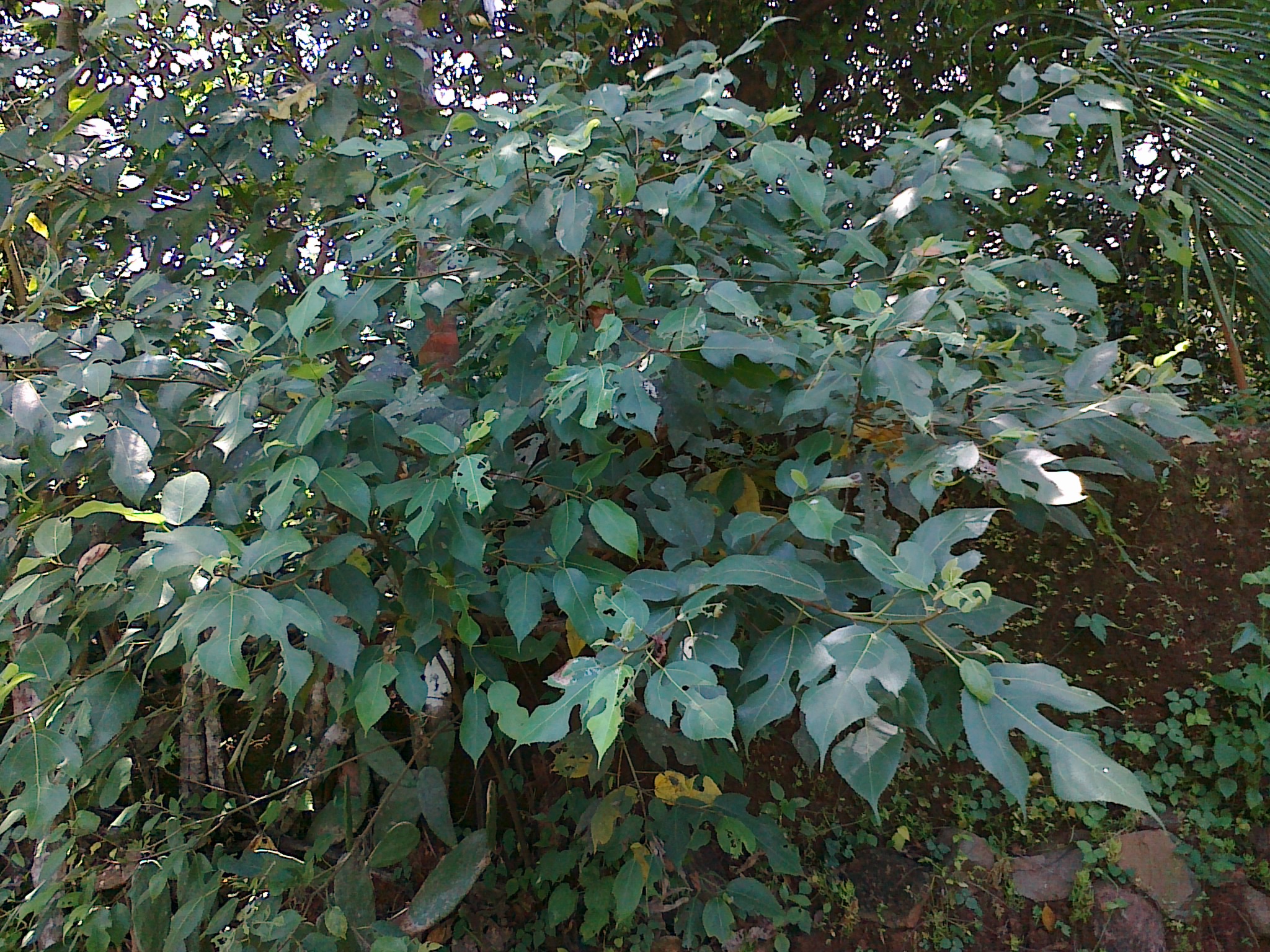Ficus exasperata

|
|
Ficus exasperata Common Names: Sandpaper Tree, Rough-Leaf Fig, Forest
Sandpaper Fig Scientific
Classification Kingdom: Plantae Clade: Tracheophytes Clade: Angiosperms Clade: Eudicots Clade: Rosids Order: Rosales Family: Moraceae Genus: Ficus Subgenus: F. subg. Urostigma Species: F. exasperata Binomial Name: Ficus exasperata Vahl Synonyms: Ficus asperrima Roxb., Ficus hispidissima Wight ex Miq., Ficus politoria Moon, Ficus punctifera Warb., Ficus scabra Willd. [Illegitimate], Ficus serrata Forssk. [Illegitimate], Ficus silicea Sim, Synoecia
guillielmi-primi de Vriese Morphological Description Ficus exasperata is a deciduous shrub or small tree, typically 5–20 m tall,
with a spreading canopy. Key features include: · Leaves: Ovate to elliptic, 3–20 cm long, 2–12 cm wide, scabrous
(sandpaper-like), alternate, apex acuminate, base acute to obtuse · Stems: Smooth grey bark, exuding non-milky viscid sap when cut · Fruits: Figs, subglobose, 1–2.5 cm in diameter, hispidulous, green
to yellowish, usually in pairs in leaf axils · Flowers: Enclosed within figs, pollinated by specific fig wasps The rough,
sandpaper-like leaves inspired its name "exasperata" (Ahmed et al.,
2012). Distribution and Habitat Ficus exasperata thrives in: · Native Range: Tropical Africa (Senegal to Ethiopia, south to South
Africa), also Yemen and India · Habitat: Evergreen forests, secondary forests, savanna woodlands,
riverbanks; 0–1,500 m altitude · Soil/Climate: Well-drained soils; humid tropical, 800–2,000 mm rainfall It prefers secondary
forest regrowth and disturbed areas (PROTA, 2019). Ethno Pharmacology Ficus exasperata is extensively utilized in African traditional
medicine to address a variety of health conditions. The leaves, in particular,
are applied externally to treat ailments such as rashes, wounds, leprous sores,
fungal infections, itching, edema, ringworm, rheumatism, and lumbar pain.
Internally, leaf preparations are consumed to manage hypertension, coughs,
colds, asthma, and as a mouthwash for oral infections. The roots and bark are
also employed for conditions like dizziness, gonorrhea, and as an emetic. Traditional uses,
supported by studies, include: · Malaria: Nigerian leaf decoction has antimalarial activity · Headache/Pain: Ghanaian leaf paste has analgesic effects. · Respiratory Issues: Bark decoction in Cameroon;
anti-inflammatory in rats (30% reduction at 300 mg/kg) (Abotsi et al., 2010). · Purgative: Nigerian root infusion; laxative effect in mice (PROTA,
2019). · Hypertension: Leaf extract in Nigeria; hypotensive in rats (20% BP
reduction at 100 mg/kg) (Oboh et al., 2014). · Antiarthritic
: Oral administration of
FEE (30–300 mg/kg p.o.) significantly reduced the arthritic edema in the
ipsilateral paw of rats with a maximal inhibition of 34.46 ± 11.42%. FEE
(30–300 mg/kg p.o.) also significantly prevented the spread of the edema from
the ipsilateral to the contralateral paws indicating inhibition of systemic
spread. The disease-modifying antirheumatic drug methotrexate (0.1–1 mg/kg
i.p.) and the steroidal anti-inflammatory agent dexamethasone (0.3–3 mg/kg
i.p.) also reduced very significantly the total polyarthritic edema as well as
the spread of the arthritis from the ipsilateral to the contralateral paws of
the treated animals(Wonder et al., 2010). Scientific validation
supports many claims, though toxicity concerns persist (Ahmed et al., 2012). Phytochemistry Key compounds include: · Phenolics: Quercitrin (43.7 mg/g), chlorogenic acid (42.8 mg/g);
antioxidant (Oboh et al., 2014). · Flavonoids: High levels; anti-inflammatory (Abotsi et al., 2010). · Saponins: Moderate; antimicrobial (Ogbolie et al., 2007). ⚠ Toxicity Profile: Sap irritates skin/eyes; high doses (150 mg/kg)
elevate liver enzymes (AST, ALT) in rats, indicating potential hepatotoxicity
(Ahmed et al., 2012). Additional Information · Ecological Role: Figs feed birds, bats, and primates;
pollinated by specific wasps · Cultural Use: Leaves used as sandpaper in Ghana; fodder in Nigeria (PROTA,
2019). · Conservation: Widespread, not threatened, but overharvested locally
(Cunningham, 2001). References
External Links More Pictures |
|
| Compounds of Ficus exasperata | |
| References |